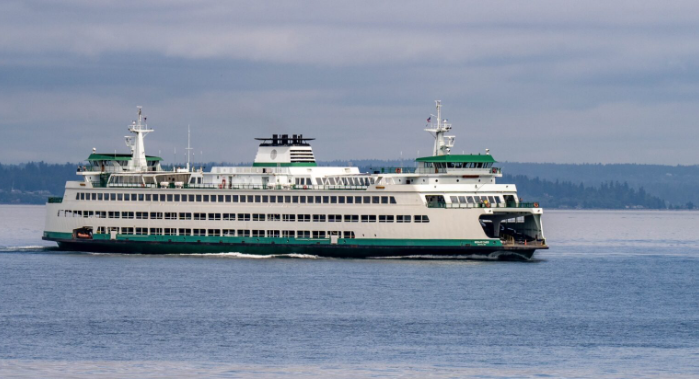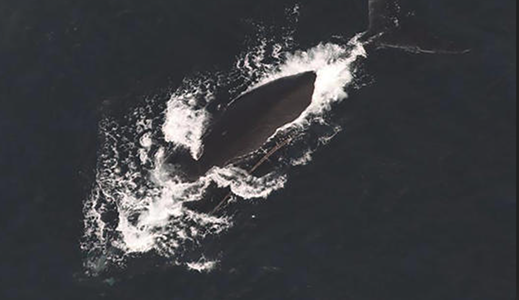— from Matthew Gilbert, Orcas Issues reporter —
Attending (1.22.19): Commissioners: Wesley Heinmiller, Amanda Montague (by phone), Jim Helminski, Tim Fuller, Rick Christmas. Chief Scott Williams, Secretary Marla Johns, Orcas Island Fire and Rescue staff, and several community members.
The Orcas Board of Fire Commissioners had much to celebrate at its first meeting of 2019. Notwithstanding final budget amendments to come in February (which are not expected to have an appreciable impact on the numbers), the department’s Micki Nichols reported that overall revenue for 2018 was $4.189M, 7% higher than estimated, while expenses came in at 7% under budget. Chief Williams later added that the state issued an audit statement of “no findings” along with positive feedback on the quality of BOFC’s budget management, which new Commissioner Rick Christmas noted was “especially impressive” given that Chief Williams and his team only recently came on board. The department has benefitted from pooling assets into a single General Fund, specifically a Local Government Investment Pool (LGIP), which has generated higher interest revenue.
Williams then reported that the department received 1200 calls last year, up approximately 100 from 2017 – an increase that is consistent with previous year-to-year growth. 68% were EMS calls, the remainder fire and fire-related calls, while there was also an increase in walk-ins. That started a conversation about how and why they are being referred to the department. Most of them come in on evenings and weekends given the island’s limited “after-hours” care options. “We’re the second contact,” said Williams.
The Union Negotiation Committee reported that the process has been “thoughtful and respectful” and they expect a “good result.” The final outcome is expected to be presented at the February BOFC meeting.
A significant portion of the meeting was devoted to an update and video presentation of the Community Paramedicine initiative. Pat Ayers, program administrator, led the discussion and began by explaining that Community Paramedicine, an emerging model developed by several national EMS associations, was originally designed for rural areas that had poor access to healthcare services.
A variation of the program called Mobile Integrated Healthcare (MIH), which relies on a wider network of health providers and other partners, is currently being prototyped by Orcas Island Fire and Rescue and San Juan EMS. The program is in the third year of a five-year grant through Medicaid’s Accountable Communities of Health (ACH) program and, after substantial design, training, and stakeholder engagement, will launch in April or May of this year. Its ultimate purpose is to fill the gap between acute and routine incidents and reduce the need for 911 calls and unnecessary hospitalization, taking some of the pressure off conventional healthcare systems.
The focus will be on home health assessments and transportation support with an emphasis on such chronic conditions as diabetes and congestive heart failure. The program’s future will depend both on its success over the next two years and funding options beyond the five-year grant. Snohomish County has a similar, publicly funded model.
Chief Williams shared an update on the 911 memorial work being done at the station. The inside lobby will focus on those directly affected by 911; a “twin memorial” will be added outside consisting of benches and a mounted bell to honor all “first responders.” These projects have been fully funded by donations.
He then explained the status of the Islands Oil Spill Association (IOSA) which is funded by the State Department of Ecology. The program, which relies on special training and equipment, apparently has money but “needs to be revived.” Different county agencies are looking into this; in the meantime, the department is seeking a grant to upgrade its own capacity to assist in the case of an oil spill.
Finally, a purchase plan for the new ambulance will be presented at the February meeting.
To view all relevant 2019 (and 2018) meeting and department documents, go to the BOMC’s open document folder on Google Drive. Not all have been uploaded yet.
**If you are reading theOrcasonian for free, thank your fellow islanders. If you would like to support theOrcasonian CLICK HERE to set your modestly-priced, voluntary subscription. Otherwise, no worries; we’re happy to share with you.**








Orcas Issues new format and frequency is terrific. I read it every day, and love it!
I assume that the “community medicine” effort is being closely coordinated with the new Orcas hospital district. Otherwise, we will have two levy-funded programs duplicating efforts. Also, is there a reserve being maintained in this period of higher revenues? The economy is cyclical, and now is the time to prepare for a downturn.
The Orcas Fire Dept. gave an MIH/ACH executive review to the Orcas Health District Commission meeting this last Tues Feb5. The Centers for Medicare and Medicaid Services, CMS funds a 5-yr Accountable Communities of Health, ACH pilot program based on the old EMS-based management “concept” for rural areas called Mobile Integrated Healthcare, MIH.* [got that?]. Funding ends in 2 yrs.
“Duplication of effort” is a dream problem .. for another island closer to the equator. What we have is icy water between jagged glaciers. Professional healthcare is not about Who has a monopoly on What aspect of service, but how to play well together. Basic, BASIC! stuff..
&Free!
“How will you network with existing community resources?” I personally asked every candidate for Chief. I guess they were thinking a rural Fire Department was about, .. “fires.” Or something.
Except our present Chief Williams, whom I’ll give a B-plus for listening, thinking.
It was NOT an item on the list of qualifications: an *F* to the Fire Commission
..and “The Process.”.
This new program will not mend the holes in our healthcare net allowing our most vulnerable to fall because it does not explicitly address a perverse “Process” that has failed us for so long, treating healthcare like a political connivance or business-mgmt problem, instead of well,
Trust: professional advocacy and kitchen-table collaboration.
“No Mission, No Margin.”
count on it. same lesson. new program
*MIH: https://drive.google.com/file/d/0B-PaOolq499cSDBLUnFkODBPX0E/view?usp=sharing